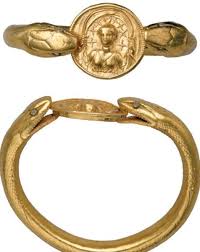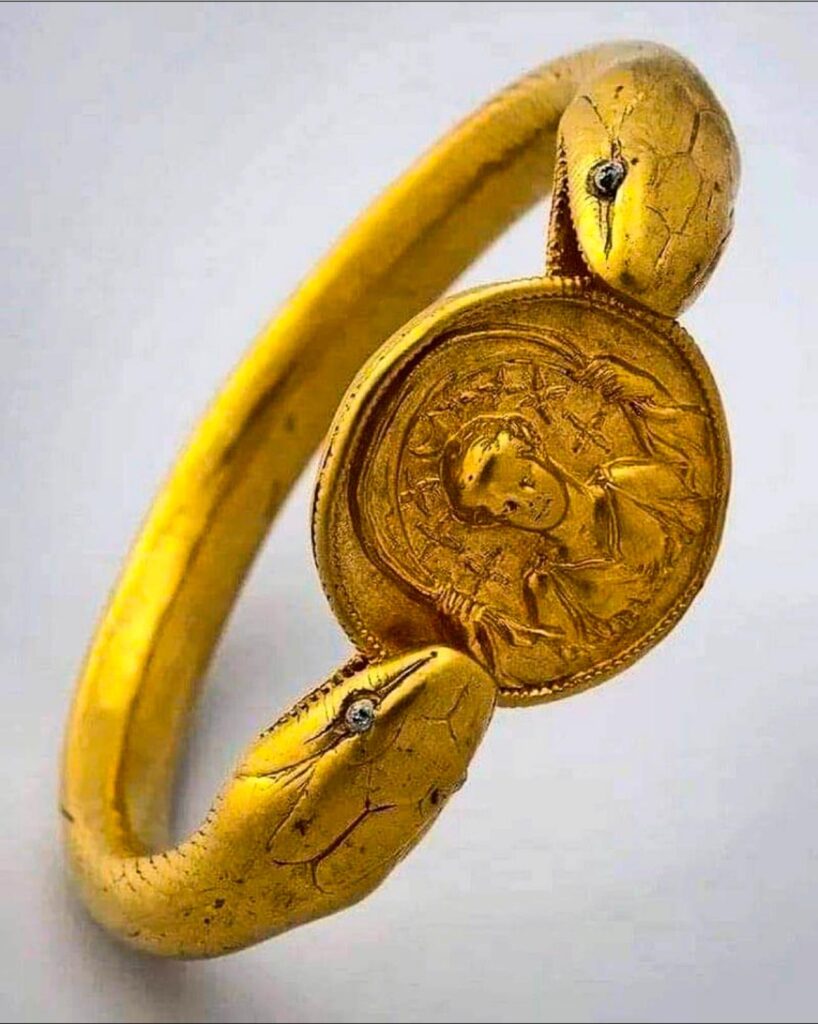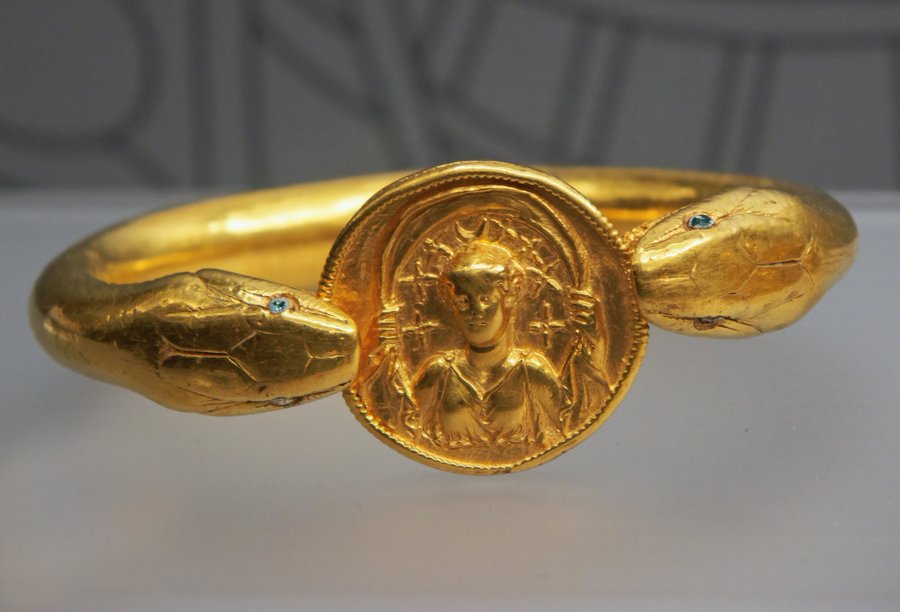In the aftermath of Mount Vesuvius’s devastating eruption in 79 AD, archaeologists made a remarkable discovery that has captivated the world – a stunning gold bracelet from the 1st century AD, found within the “House of the Golden Bracelet” in the ancient Roman city of Pompeii. This exquisite piece of jewelry offers a poignant window into the lives and tragic fate of Pompeii’s inhabitants.
The bracelet features a captivating two-headed snake design, with glass eyes intricately coiled around the wearer’s arm. Holding a golden disk at its center, the bracelet depicts the image of the goddess Selene, adorned with a half-moon-shaped tiara and surrounded by seven stars. This intricate and symbolic piece of Roman craftsmanship provides a glimpse into the religious beliefs, artistic sensibilities, and daily lives of the people who once called Pompeii home.
The Discovery of the Bracelet

The discovery of the Pompeii bracelet was made during excavations of the “House of the Golden Bracelet,” a well-preserved Roman dwelling in the heart of the ancient city. Archaeologists uncovered the remains of a woman, alongside those of another adult and a child, all of whom perished in the catastrophic eruption of Mount Vesuvius.
The bracelet was found still adorning the arm of the woman, a poignant reminder of the tragic and sudden end that befell the people of Pompeii. The level of detail and craftsmanship exhibited in the bracelet’s design is a testament to the skill and artistry of Roman goldsmiths during this period.
Symbolism and Significance
The intricate symbolism and design of the Pompeii bracelet offer valuable insights into the religious beliefs and cultural practices of ancient Rome. The two-headed snake motif was a common symbol in Roman jewelry, representing duality, protection, and the cyclical nature of life and death.

The golden disk at the center of the bracelet depicts the image of the goddess Selene, the lunar deity associated with the moon, fertility, and the natural world. The half-moon-shaped tiara and the surrounding seven stars further reinforce the bracelet’s connection to Selene, highlighting the importance of celestial deities in Roman religious and cultural traditions.
The inclusion of these powerful symbols suggests that the bracelet’s owner likely held a deep reverence for the goddess Selene and the natural world she represented. This discovery provides a tangible link to the spiritual beliefs and practices of the people of Pompeii, offering a glimpse into their daily lives and the role that religion and mythology played in their society.
Craftsmanship and Artistry
The Pompeii bracelet is a stunning example of the technical prowess and artistic flair of Roman goldsmiths during the 1st century AD. The intricate coiling of the two-headed snake design, the precision of the glass eyes, and the delicate crafting of the golden disk all demonstrate the exceptional skill and attention to detail that went into the creation of this piece.

The use of high-quality materials, such as gold and glass, further underscores the value and significance of the bracelet within the context of Pompeii’s wealthy and prosperous society. The bracelet’s owner was likely a member of the elite or upper-class, able to afford such a lavish and exquisitely crafted piece of jewelry.
The discovery of the bracelet has not only provided valuable insights into the artistic and cultural traditions of ancient Rome but has also sparked the imaginations of people around the world, captivated by the beauty and mystery of this remarkable artifact.
The Tragic End of Pompeii
The Pompeii bracelet’s discovery is inextricably linked to the tragic fate that befell the ancient city and its inhabitants. The eruption of Mount Vesuvius in 79 AD was a catastrophic event that buried Pompeii and the surrounding area under layers of ash and volcanic debris, preserving the city and its artifacts in a remarkable state of preservation.
The remains of the woman found with the bracelet, along with those of the other two individuals, serve as a poignant reminder of the sudden and devastating nature of the eruption. The bracelet, still adorning the woman’s arm, offers a tangible connection to the lives and stories of the people who perished in the disaster, frozen in time and forever etched into the collective memory of humanity.
Conclusion
The Pompeii bracelet, with its captivating design and powerful symbolic meaning, stands as a testament to the rich cultural heritage and artistic prowess of ancient Rome. This remarkable artifact not only provides a window into the daily lives and beliefs of Pompeii’s inhabitants but also serves as a poignant reminder of the fragility of human existence and the enduring power of the past to captivate and inspire us.
As we continue to uncover and study the treasures of Pompeii, the Pompeii bracelet remains a symbol of the enduring allure of the ancient world and the stories it has to tell. Through the careful preservation and study of such artifacts, we can gain a deeper understanding of the past and the experiences of those who came before us, ultimately enriching our own understanding of the human condition and the enduring power of human creativity and resilience.

